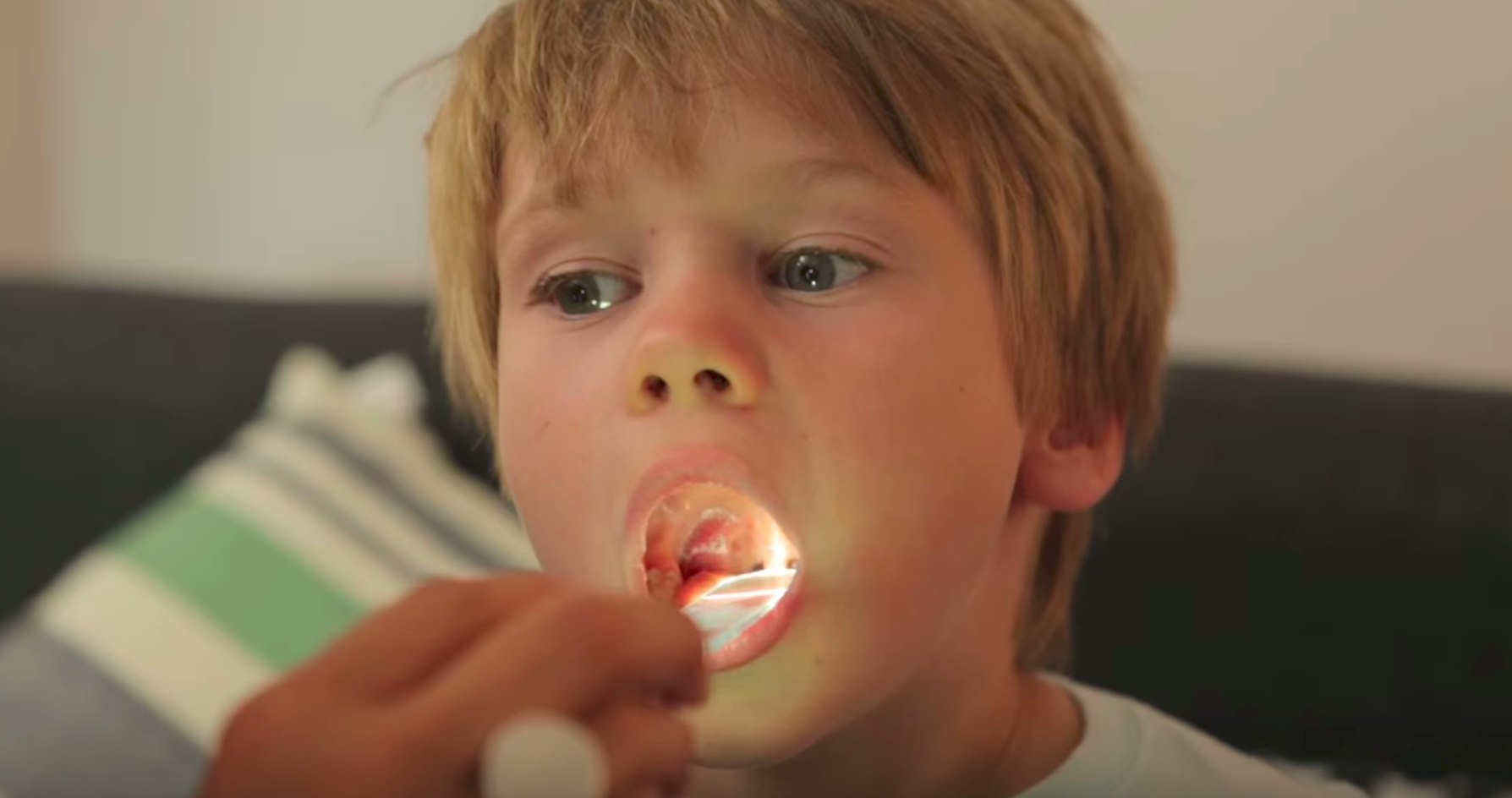Meet IoT's latest target: A wooden stick


Throat Scope is a light-up tongue depressor.
This year's Edison Awards, held in the financial district of New York City, honored innovation in 15 categories. Winners ranged from industrial giants such as Catepillar to cosmetics. DIY home machines came from marketer NuSkin, and startup PicoBrew hawked conceptually Keurig-like machines for mixing custom moisturizers and brewing beer.
Read also: iRobot adds Wi-Fi connectivity to more home robots | Is 'admin' password leaving your IoT device vulnerable to cyberattacks? | Microsoft launches 'IoT-as-a-service' offering for enterprises | Top 5 IoT security best practices (TechRepublic)
But one of the lowest-tech product to still include a modicum of electronics was Throat Scope, a light-up tongue depressor meant to compete with the wooden stick that has become synonymous with the "Say 'Ahhh'" experience. Developed by an Australian mom who observed how the depressor-flashlight combo left doctors struggling to look into kids' mouths while holding open their jaws, the Throat Scope lights up a patient's pie hole without need for a separate light source. Beyond the market for doctors with fewer than three hands, Holland Healthcare, the company behind Throat Scope, hopes to tap into the consumer market, teaching oral inspectors about various warning signs for maladies such as tonsillitis and mouth ulcers.
Consisting of an LED-lit base and a system of transparent flat disposable "blades" that mirror the their razor counterparts as a recurring revenue model, the Throat Scope is pretty high-tech compared to the organic incumbent, but its illumination of white teeth includes no Bluetooth or other connectivity. Nonetheless, Throat Scope already has a companion app for the product that could be used to crowdsource info on the state of mouth health. Indeed, it would not be a huge leap for the Throat Scope to progress from including a light to a camera. There might even be opportunities for wide angle or 360-degree imaging to set it apart. Holland Healthcare has been picky about components, at one point delaying shipments to a large US drug chain for months because a supplier substituted the LED light.
And that could make a lot of sense for cases where there are already signs of oral problems. Its developers, though, will likely find it more challenging to advocate more regular checking in at home. Such a quest hearkens back to a similar push by blood pressure monitor maker Qardio, which advocates that regular blood pressure monitoring -- even among those without a high blood pressure diagnosis -- can be useful. And at least one developer of a continuous blood glucose meter has made the case for regular blood sugar checking among those who haven't flirted with or received a diabetes diagnosis.
Using Throat Scope involves far less hassle than blood glucose monitoring. Still, integrating mouth scanning functionality into some kind of toothbrush for a pre-brushing scan might make it easier to integrate it into one's daily routine as well as create a stronger case for a connected toothbrush.
SEE: 5G: What it means for IoT (ZDNet/TechRepublic special feature) | Download the free PDF version (TechRepublic)
That is all far down the road for what is today a simple alternative to a stick of wood. But Throat Scope's success so far shows how even a modicum of electronics, a solid business model, and a simple value proposition can convince a professional user base to move on from what has literally been a throwaway tool.
Major US cities are plagued by millions of exposed IoT devices